


x
During the opening in its new venues, The Address Gallery is delighted to present Break-in. Temporal displacement, offering a generational glimpse into a fragment of the Italian artistic scene of the nineties.
With the involvement of Francesco De Bernardi, Andrea Bocca, Marina Cavadini, Beatrice Celli, Francesco Cima, Lucia Cristiani, Davide Dicorato, Nicola Ghirardelli, Lorenzo Lunghi, Giuseppe Di Liberto, Edoardo Manzoni, Ludovico Orombelli, Luca Marcelli Pitzalis, Gaia De Megni, Leonardo Meoni, bn + BRINANOVARA, Marco Rigoni, Giuliana Rosso, Virginia Russolo, Riccardo Sala, Adelisa Selimbasic, Valentina Parati.

Lorenzo Lunghi, 'Miraggio', 2019, plexiglass, caramel, vitamins, antibiotics, ibuprofen, courtesy the artist and the gallery
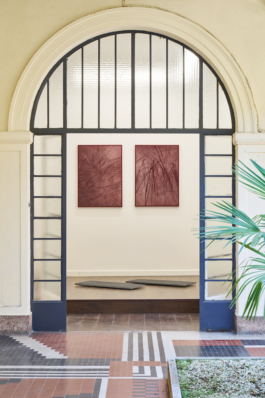
Break in. Temporal displacement, Installation view, courtesy the artists and the gallery
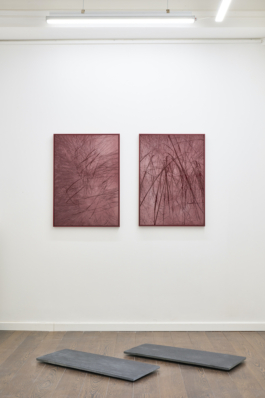
Break in. Temporal displacement, Installation view, courtesy the artists and the gallery

Break in. Temporal displacement, Installation view, courtesy the artists and the gallery
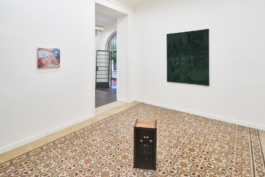
Break in. Temporal displacement, Installation view, courtesy the artists and the gallery

Break in. Temporal displacement, Installation view, courtesy the artists and the gallery

Beatrice Celli, 'Sive mas, Sive foemina', 2021, (detail), glazed ceramic, courtesy the artist and the gallery

Leonardo Meoni, 'À mon seul désir', 2022, velvet on canvas, courtesy the artist, Spazier Amanita and the gallery
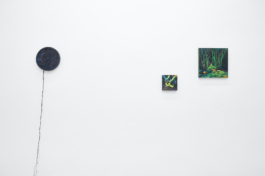
Break in. Temporal displacement, Installation view, courtesy the artists and the gallery

Break in. Temporal displacement, Installation view, courtesy the artists and the gallery

Break in. Temporal displacement, Installation view, courtesy the artists and the gallery

Break in. Temporal displacement, Installation view, courtesy the artists and the gallery

Giuliana Rosso, 'Yogurt a colazione', 2021, oil on canvas, courtesy the artist and the gallery

Ludovico Orombelli, 'Contenitori (multipli), 2022, fresco on cases, courtesy the artist and the gallery

Break in. Temporal displacement, Installation view, courtesy the artists and the gallery

Break in. Temporal displacement, Installation view, courtesy the artists and the gallery

Break in. Temporal displacement, Installation view, courtesy the artists and the gallery
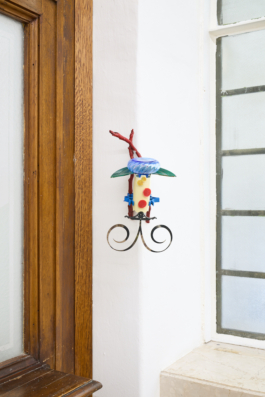
Eduardo Manzoni, 'Wilson', 2022, found objects and stainless steel, courtesy the artist and the gallery

Nicola Ghirardelli, 'Primo paesaggio desiderabile (I)', 2022, terracotta, iron and bolts, courtesy the artist and the gallery

Davide Dicorato, 'Mantra Memorabilia', 2022, sea turtle's skull, rosary chains, coins, courtesy the artists and the gallery
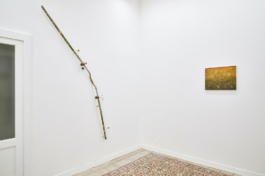
Break in. Temporal displacement, Installation view, courtesy the artists and the gallery
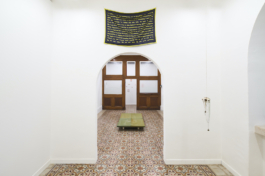
Break in. Temporal displacement, Installation view, courtesy the artists and the gallery

Valentina Parati, 'Gate sp404', 2022, video 7'00'', courtesy the artists and the gallery
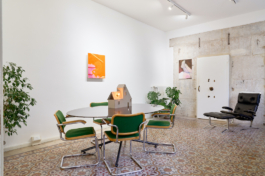
Break in. Temporal displacement, Installation view, courtesy the artists and the gallery

Davide Dicorato, 'Manubrio', 2022, (detail), handlebar, bamboo and dried flowers, courtesy the artists and the gallery

Edoardo Manzoni, 'Trappola', 2022, (detail), mixed media, courtesy the artists and the gallery
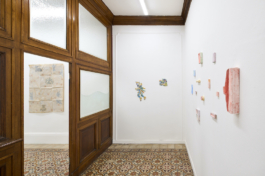
Break in. Temporal displacement, Installation view, courtesy the artists and the gallery
During the opening in its new venues, The Address Gallery is delighted to present Break-in. Temporal displacement, offering a generational glimpse into a fragment of the Italian artistic scene of the nineties.
With the involvement of Francesco De Bernardi, Andrea Bocca, Marina Cavadini, Beatrice Celli, Francesco Cima, Lucia Cristiani, Davide Dicorato, Nicola Ghirardelli, Lorenzo Lunghi, Giuseppe Di Liberto, Edoardo Manzoni, Ludovico Orombelli, Luca Marcelli Pitzalis, Gaia De Megni, Leonardo Meoni, bn + BRINANOVARA, Marco Rigoni, Giuliana Rosso, Virginia Russolo, Riccardo Sala, Adelisa Selimbasic, Valentina Parati.

Lorenzo Lunghi, 'Miraggio', 2019, plexiglass, caramel, vitamins, antibiotics, ibuprofen, courtesy the artist and the gallery

Break in. Temporal displacement, Installation view, courtesy the artists and the gallery

Break in. Temporal displacement, Installation view, courtesy the artists and the gallery

Break in. Temporal displacement, Installation view, courtesy the artists and the gallery

Break in. Temporal displacement, Installation view, courtesy the artists and the gallery

Break in. Temporal displacement, Installation view, courtesy the artists and the gallery

Break in. Temporal displacement, Installation view, courtesy the artists and the gallery

Beatrice Celli, 'Sive mas, Sive foemina', 2021, (detail), glazed ceramic, courtesy the artist and the gallery

Break in. Temporal displacement, Installation view, courtesy the artists and the gallery

Break in. Temporal displacement, Installation view, courtesy the artists and the gallery

Break in. Temporal displacement, Installation view, courtesy the artists and the gallery

Giuliana Rosso, 'Yogurt a colazione', 2021, oil on canvas, courtesy the artist and the gallery

Ludovico Orombelli, 'Contenitori (multipli), 2022, fresco on cases, courtesy the artist and the gallery

Break in. Temporal displacement, Installation view, courtesy the artists and the gallery

Break in. Temporal displacement, Installation view, courtesy the artists and the gallery

Break in. Temporal displacement, Installation view, courtesy the artists and the gallery

Eduardo Manzoni, 'Wilson', 2022, found objects and stainless steel, courtesy the artist and the gallery

Nicola Ghirardelli, 'Primo paesaggio desiderabile (I)', 2022, terracotta, iron and bolts, courtesy the artist and the gallery

Davide Dicorato, 'Mantra Memorabilia', 2022, sea turtle's skull, rosary chains, coins, courtesy the artists and the gallery

Break in. Temporal displacement, Installation view, courtesy the artists and the gallery

Break in. Temporal displacement, Installation view, courtesy the artists and the gallery

Valentina Parati, 'Gate sp404', 2022, video 7'00'', courtesy the artists and the gallery

Break in. Temporal displacement, Installation view, courtesy the artists and the gallery

Davide Dicorato, 'Manubrio', 2022, (detail), handlebar, bamboo and dried flowers, courtesy the artists and the gallery

Edoardo Manzoni, 'Trappola', 2022, (detail), mixed media, courtesy the artists and the gallery

Break in. Temporal displacement, Installation view, courtesy the artists and the gallery